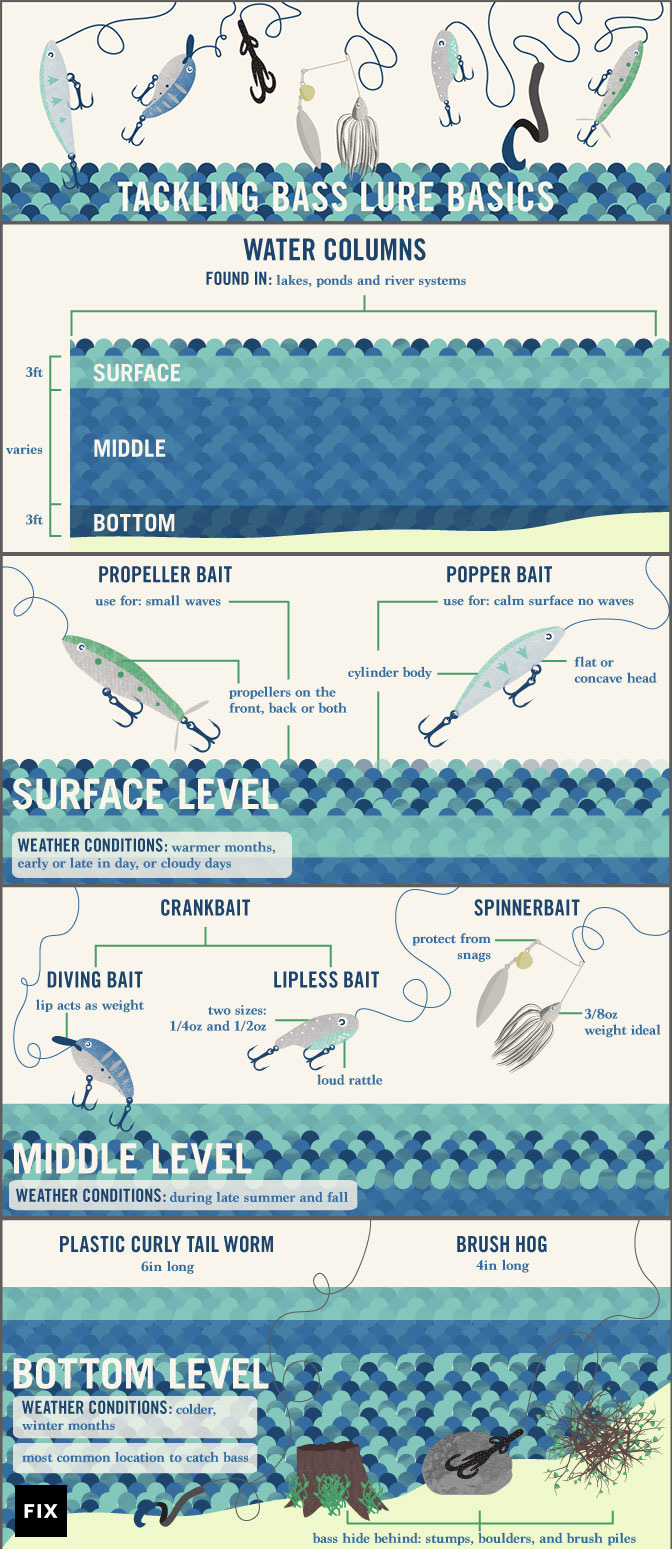One of the most popular lures used for fishing is the spoon and at times they are highly effective for catching bass too. Spoons come in different shapes and sizes, each designed to mimic different prey, work for specific presentations, and trigger strikes under different fishing situations.
Below we explore the different types of spoons used for bass fishing and how to present them effectively.
Open Water Casting Spoons
Casting spoons are the most common type of spoon and are used to cover large areas fairly quickly. These spoons are often shaped like a teardrop or an oval with a cupped face and come in various sizes, colors, and weights.
The cupped face of the spoon creates a wobbling action as it moves through the water mimicking a fleeing baitfish. The weight and compact design of the spoon enables long-distance casting and helps it sink to the desired depth quickly.
Casting spoons work best in open water or around scattered cover like docks, rocks, weed lines, and drop-offs. They are also effective when fishing for suspended fish at varying depths in the water column by using the countdown method to get the spoon to the desired depth.
When using a casting spoon to fish for bass, it's important to select a spoon that matches the size of the baitfish in the area. A good rule of thumb is to choose a spoon that is around the same size as the baitfish the bass are feeding on especially when small baitfish are prevalent during the summer and early fall.
Once you have selected a spoon for current conditions, cast it out into the water, let it sink to desired depth, and start retrieving. This will create a wobbling action in the water that will attract the attention of bass. Use a steady, rhythmic motion to start the retrieve, varying the speed and action (twitching, pause n go, yo-yo) to imitate the movement of a baitfish.
Popular casting spoon models include Eppinger's Daredevle, Blue Fox Classic, Thomas Bouyant and Mepps Little Wolf plus many more!
Weedless Spoons
Weedless spoons are designed to be fished in and around vegetation without getting snagged. They often have a single hook that is protected by a weed guard or a wire arm that extends out from the lure. Weedless spoons are effective in areas with heavy cover and can be used to target bass hiding in weed beds like lily pad patches or around woody cover.
When fishing with a weedless spoon, cast it out into the vegetation and retrieve it back slowly, making sure to bump it along the edges of the weeds. You can also try pausing the retrieve periodically to allow the spoon to flutter down into any openings in the weeds, which can entice nearby bass to strike.
Popular weedless spoon models include Eppinger's Weedless Daredevle, Northland's Jaw Breaker, Heddon Moss Boss, Mepps Timber Doodle and the Johnson Silver Minnow...
Jigging Spoons



























